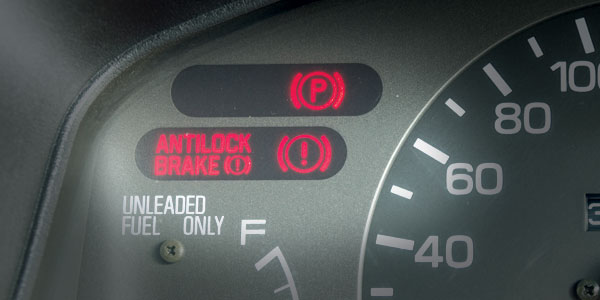Brakes are one of the most critical safety components of any vehicle. They allow drivers to slow down or stop safely, preventing accidents and ensuring smooth operation on the road. However, like any mechanical system, brakes can experience malfunctions over time, compromising their effectiveness and putting drivers at risk. In this comprehensive guide, we’ll discuss the common signs of brake malfunction in cars, helping you identify potential issues and take appropriate action to maintain your vehicle’s safety.
Squealing or Grinding Noises: One of the most recognizable signs of brake problems is unusual noises when applying the brakes. Squealing or squeaking noises often indicate worn brake pads, which have a built-in wear indicator that emits a high-pitched sound when the pads are nearing the end of their lifespan. Grinding noises, on the other hand, typically suggest metal-to-metal contact between the brake pads and rotors, indicating severe wear and potential damage to the braking system.
Vibration or Pulsation: If you feel a pulsating sensation or vibration in the brake pedal when applying pressure, it could indicate warped brake rotors. Warped rotors can result from excessive heat buildup during braking, causing uneven wear and compromising braking performance. This issue not only affects the vehicle’s ability to stop smoothly but also increases stopping distances, posing a safety hazard, particularly in emergency situations.
Soft or Spongy Brake Pedal: A soft or spongy brake pedal that sinks to the floor when depressed is a common indication of air in the brake lines or a brake fluid leak. Air bubbles in the brake lines can reduce hydraulic pressure, resulting in decreased braking force and longer stopping distances. Similarly, a brake fluid leak can lead to a loss of hydraulic pressure, compromising the effectiveness of the entire braking system. Both issues require immediate attention to prevent brake failure and ensure safe operation of the vehicle.
Brake Warning Light: Modern vehicles are equipped with a dashboard warning light that illuminates when there’s a problem with the braking system. If the brake warning light comes on while driving or stays illuminated after starting the vehicle, it indicates a fault in the brake system that requires inspection by a qualified mechanic. Common causes of a illuminated brake warning light include low brake fluid level, worn brake pads, malfunctioning brake sensors, or a fault in the anti-lock braking system (ABS). More details can be found at the link: https://outdoorlogic.net/how-to-repair-a-ford-f-150-f-250-f-350-key-fob/
Pulling to One Side: If your car pulls to one side when braking, it could be a sign of uneven brake pad wear, a stuck caliper, or a brake fluid leak. Uneven brake pad wear can cause uneven braking forces, leading to vehicle pulling to one side during braking. A stuck caliper can cause the brake pads on one wheel to apply more pressure than the others, resulting in steering pull during braking. Additionally, a brake fluid leak can affect brake balance and cause the vehicle to veer to one side when the brakes are applied.

Burning Smell: A burning smell coming from the wheels or brakes is a cause for concern and should be addressed immediately. This odor can indicate overheated brake components, such as brake pads, calipers, or rotors, due to excessive friction or dragging brakes. Overheating can lead to brake fade, reduced braking performance, and even brake system failure if not addressed promptly. Pull over safely and allow the brakes to cool down before continuing to drive, and have the braking system inspected by a professional technician as soon as possible.
Visible Brake Fluid Leaks: Inspect the area around each wheel for signs of brake fluid leaks, such as wet spots or puddles of fluid. Brake fluid is essential for transferring hydraulic pressure from the brake pedal to the brake calipers or wheel cylinders, allowing for effective braking action. A brake fluid leak can compromise the integrity of the braking system, leading to reduced stopping power and increased risk of accidents. If you notice any signs of brake fluid leaks, have the vehicle inspected by a qualified mechanic immediately.
Longer Stopping Distances: If your vehicle takes longer to stop than usual or requires increased braking effort, it could indicate worn brake pads, contaminated brake fluid, or other brake system issues. Worn brake pads have reduced friction material, resulting in decreased stopping power and longer stopping distances. Contaminated brake fluid, such as moisture or air bubbles, can compromise hydraulic pressure and reduce braking effectiveness. Both issues should be addressed promptly to ensure safe braking performance.
In conclusion, being aware of the common signs of brake malfunction in cars is essential for maintaining vehicle safety and preventing accidents. If you notice any of these symptoms while driving, it’s crucial to address them promptly to avoid further damage to the braking system and ensure safe operation of the vehicle. Regular inspection and maintenance of the braking system, including brake pads, rotors, calipers, and brake fluid, can help identify and address potential issues before they escalate into serious problems. If you’re unsure how to diagnose or repair brake problems yourself, it’s best to seek assistance from a qualified mechanic or automotive technician to ensure proper diagnosis and repair of the braking system. Remember, your safety and the safety of others on the road depend on the proper functioning of your vehicle’s brakes.
